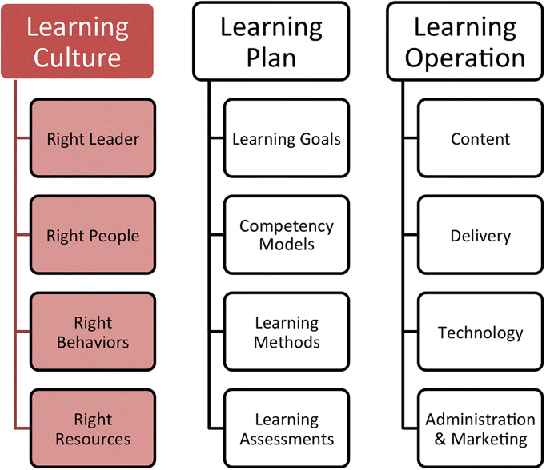Chapter 2Building a Learning Culture

Sarder Framework: Building the Learning Organization
Just as nations have distinct cultures, organizations have distinct ways of believing, thinking, and acting that are manifested by the symbols, heroes, rituals, ideology, and values. The nature of learning and the manner in which it occurs are determined in large measure by organizational culture.1
—Michael Marquardt
Imagine you are a consultant who has been brought in to observe two organizations, both of which are about the same size and in similar industries. Following are some of the things you notice:
Organization 1. The open space is broken up into a maze of cubicles that wall people off from one another. Managers have private offices around the periphery of the space, and the larger the office, the higher up the manager. Employees often have to knock or make an appointment to gain access. Employees seldom see the executives and senior managers, who are on a floor of their own, with a private dining room. Access to senior managers is only by appointment. When you ask people, “How does the work you do contribute to the organization's success?” most of them shrug, or say, “How should I know?” The meetings you observe are run by managers or team leaders, who do most of the talking. Training is offered haphazardly, and although there is a tuition reimbursement program, few employees ...
Get Building an Innovative Learning Organization now with the O’Reilly learning platform.
O’Reilly members experience books, live events, courses curated by job role, and more from O’Reilly and nearly 200 top publishers.

